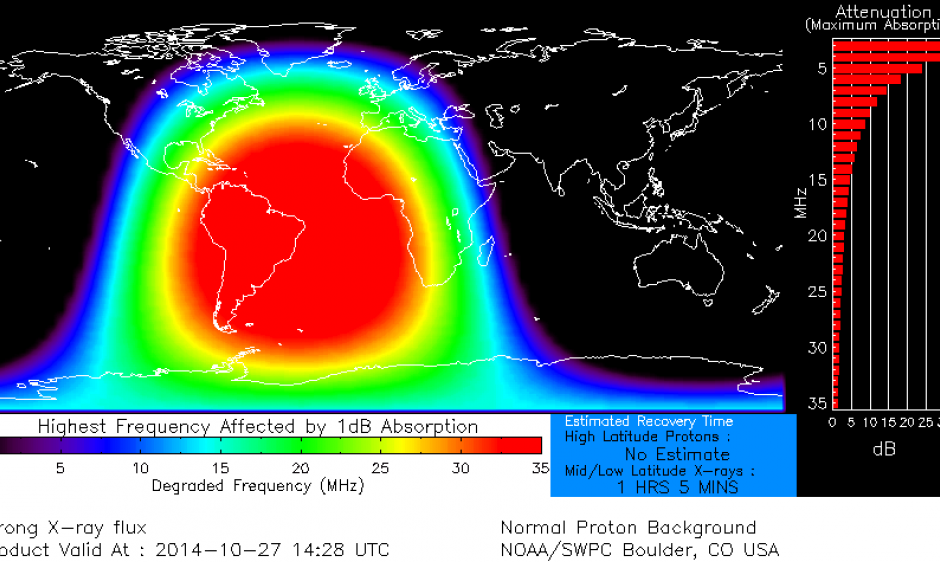
If it's a new day, it's time for another R3 (Strong) Radio Blackout
Another day and another R3 (Strong) Radio Blackout from active region 2192. The R3 Radio Blackout peaked at 10:47 am EDT (1447 UTC) and was over by 11:09 am EDT (1509 UTC). It was followed by an R1 (Minor) Radio Blackout a few hours later. Communications problems in the Atlantic Ocean region were reported during the R3 storm. Region 2192 has now produced a total of 23 M-class solar flares (R1-R2 Radio Blackout) and 6 X-class solar flares. All of these were R3 Radio Blackouts. Region 2192 remains capable of producing additional significant activity. We will keep this page updated as activity occurs.